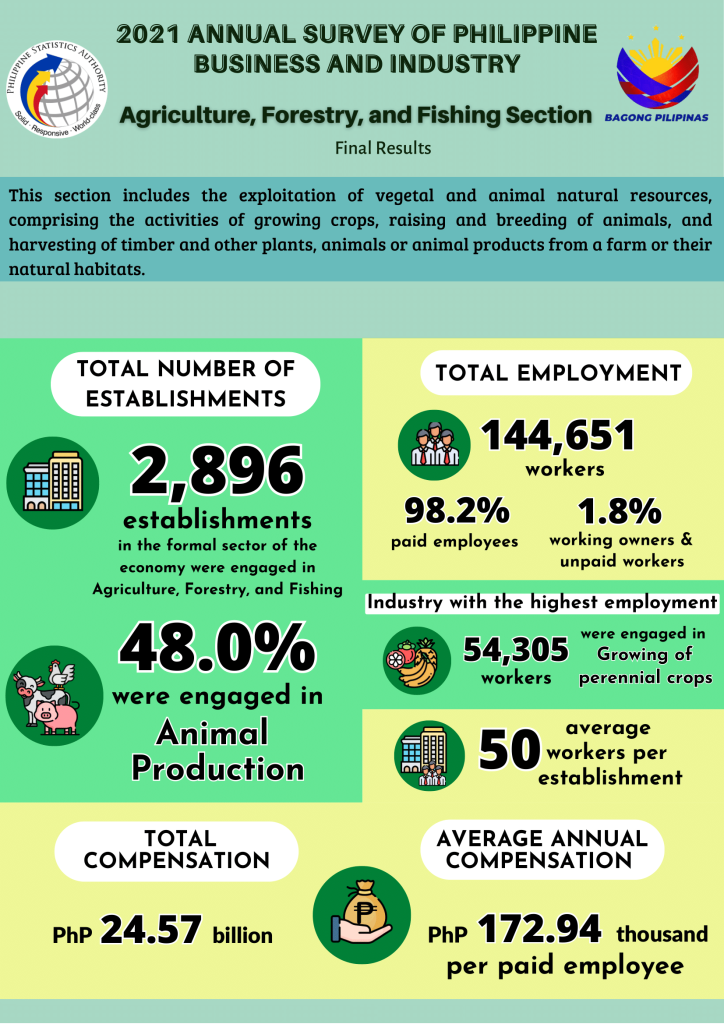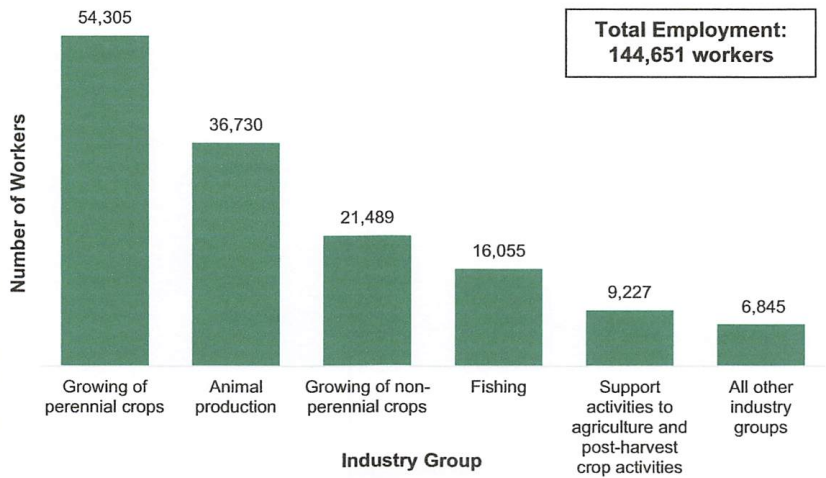In this Article
In a special release by the Philippine Statistics Authority (PSA), perennial crop growing employed the most workers in the AFF sector with 54,305 followed by animal production with 36,730, and non-perennial crop cultivation with 21,489.

In 2021, the agriculture, forestry, and fishing sectors employed 144,651 workers, a 4.1% increase from 2020. Paid employees constitute 98.2% of the workforce. Perennial crop growing employed the most workers, 54,305 (37.5%), followed by animal production, 36,730 (25.4%), and non-perennial crop cultivation, 21,489 (14.9%).

The combined workforce of the top three areas made up 48% of the workforce in the agriculture, forestry, and fisheries sectors. The Davao Region led with 32,250 workers, representing 22.3 percent of the total, followed by Northern Mindanao with 20,869 workers (14.4%), and Western Visayas with 16,359 workers (11.3%).
The average number of workers per establishment in the sector was 50, a decrease of 9.1 percent from 55 workers in 2020. Among industry groups, growing of perennial crops had the highest average employment with 173 workers per establishment, followed by fishing with 115 workers and growing of non-perennial crops with 45 workers. The National Capital region (NCR) had the highest average employment by region, with 182 workers per establishment, followed by Zamboanga Peninsula with 125 workers and the Davao Region with 102 workers.
Reference: Philippine Statistics Authority. (2023, September 20). Special Release: 2021 Annual Survey of Philippine Business and Industry Agriculture, Forestry, and Fishing Section Final Results. Retrieved June 7, 2024 from
https://www.psa.gov.ph/system/files/isd/SR%202021%20ASPBI%20Section%20A%20Final.pdf




